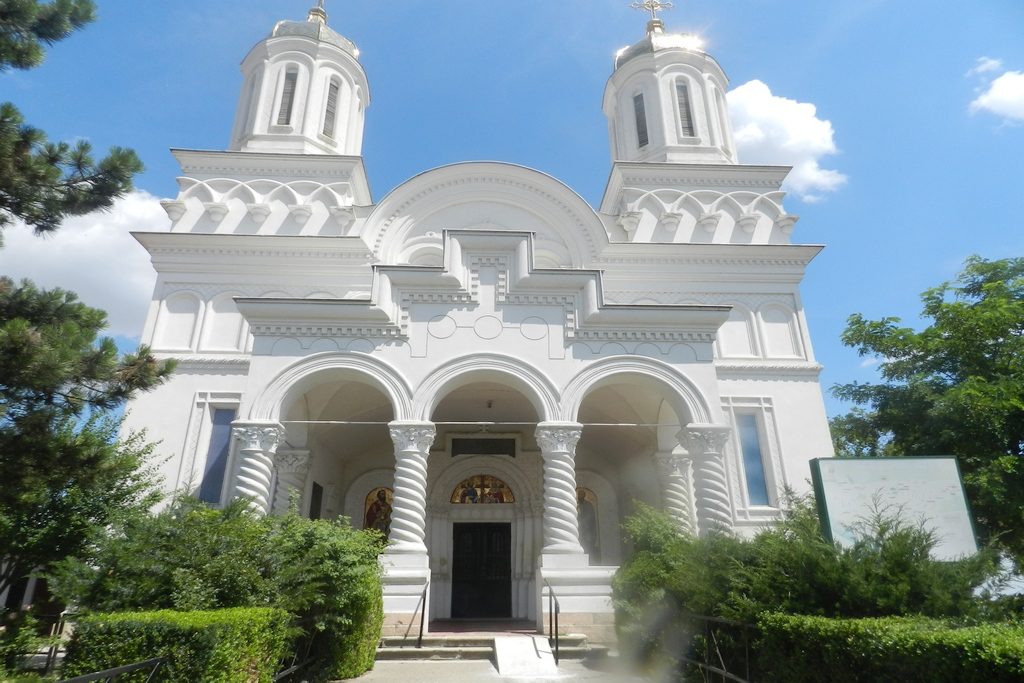

The church was consecrated on 8 September 1908, dedicated to “Saint Emperors Constantine and Helen” the name it still bears today by His Grace Bishop of Galaţi. During the war from 1916, the church was desecrated by the Turkish army, being turned into horse stable. It was reconsecrated in 1919, being returned to the cult with the same beauty.
The foundation of the church is carved in natural stone, walls are made of unpressed brick. The style of the church is Byzantine, cross-shaped. The roof is made of galvanized sheet. The church has seven towers, two main, one central, surrounded by 4 smaller, and has the rooms common to the orthodox sanctuaries: narthex, nave and altar. The interior of the church is enough lighted through 26 windows, instead of windows, the church being adorned with stained glass and with a chandelier with 72 lights. The whole painting of the church was designed by the painter from Ploieşti, Toma Vintilescu. The narthex of a church has a width of 27,30 m and a length of 17,10 m. It is supported by six massive pillars with beautifilly ornated capitals, has 35 stalls, 22 on the right and 13 on the left.
The nave is separated from the narthex by a large opening. It has 37 stalls, of which 2 are hierarchical, is lighted through six windows. The altar has a width of 4.60 m and 8.50 m in length. It is provided with Diaconicon on the right and Oblation on the left side. Inside the altar is the Holy Table on which are placed sacred objects: the Gospel, the pall, the ark and the Holy Cross. The whole altar is dominated by the figure of Virgin Mary. In the lower register are represented the faces of the significant Saints Hierarchs of the Orthodox Church. The exquisitely harmonized colors, the richness of details, diversity in the characters’ physiognomy, give these paintings a high artistic value.
The present church is situated in the West of the city, on a massive limestone rock, that was found within the former Roman fortress Carsium. From the former fortress has left nothing but a piece of 2 m thick wall, which is located in the southern part of the city.
